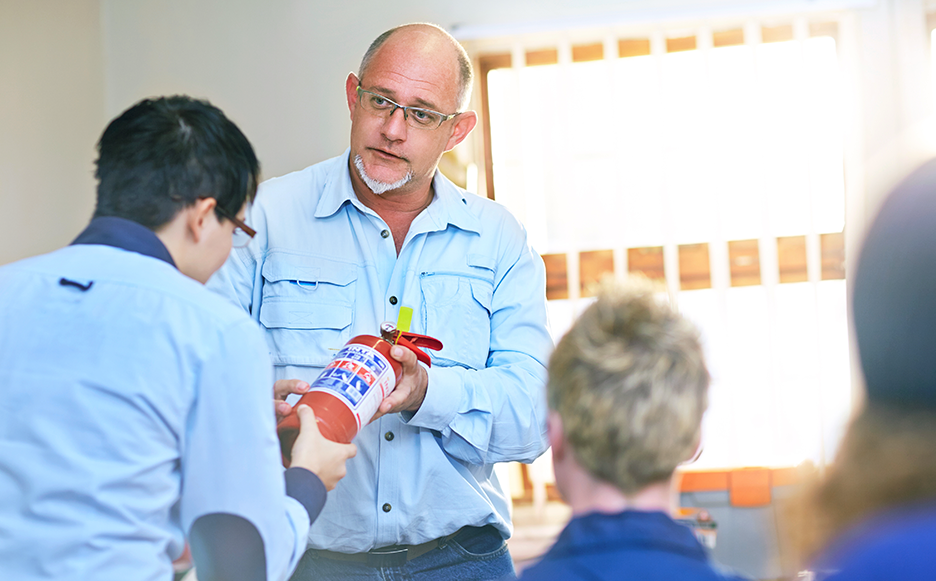Risks like fires, natural disasters, and industrial accidents can have a devastating impact on communities. If left unmitigated, these hazards can lead to loss of life, damage to property, and long-term economic and social disruption.
In many of these instances, fire departments are on the front lines responding to these incidents and are therefore uniquely positioned to take action to prevent them.
That’s where Community risk reduction (CRR) comes in.
CRR is a proven approach that enables fire agencies and fire departments to identify and mitigate hazards and risks in their communities.
The goal of CRR is to reduce the likelihood and impact of these risks, and to better prepare the community to respond to and recover from any potential incidents — primarily through public education and outreach, emergency planning and response training, and the development of community-wide emergency preparedness programs.
By embracing community risk reduction, fire agencies and fire departments can play a vital role in protecting the communities they serve.
What are some examples of community risk reduction?
Community risk reduction covers countless important activities, so it can be hard to pin down exactly what it means. Here’s what it might look like in your community:
- Providing training to community members on how to respond to natural disasters, such as earthquakes, hurricanes, and wildfires
- Performing wildland urban interface (WUI) inspections to maintain safety standards for excess vegetation and home hardening, thus reducing risk of wildfire death and property damage
- Conducting public education campaigns on fire safety and emergency preparedness
- Working with local businesses to identify and mitigate potential hazards, such as chemical spills or faulty electrical wiring
- Installing smoke detectors and other fire safety equipment in high-risk buildings, such as low-income housing developments
- Developing and implementing emergency evacuation plans for schools, hospitals, and other high-risk buildings, or developing plans to shelter large numbers of people in the event of a disaster
- Conducting regular drills and exercises to test and evaluate the effectiveness of emergency response plans
Tips for managing your own community risk reduction initiative
While most advice will depend on the specific area of risk you’re trying to reduce, there are a few common best practices that apply across the board:
- Engage diverse stakeholders: strong CRR efforts must involve a wide range of stakeholders, including local governments, emergency response agencies, community organizations, and more. By incorporating more perspectives and areas of expertise, CRR programs can be more comprehensive and effective.
- Conduct regular assessments of risk readiness: to identify and prioritize the hazards and risks that are most likely to affect a community, you need to assess the community's vulnerabilities and strengths. This can involve using data and information from emergency response agencies, conducting surveys of community members, or conducting inspections in the community.
- Develop comprehensive emergency response plans: once risks have been identified and prioritized, develop comprehensive emergency response plans that outline the steps to mitigate those risks and respond to potential incidents. These plans should be regularly updated and tested through drills and exercises to ensure that they are effective and can be implemented quickly and efficiently in the event of an emergency.
- Invest in community-wide emergency preparedness: this can include providing training to community members on how to respond to emergencies, installing fire safety equipment and emergency alert systems in high-risk buildings, and conducting public education campaigns on how to better prepare for these types of emergencies.
On top of this, you need to be aware of the obstacles you might face along the way.
Challenges and limitations of CRR:
While community risk reduction can be a powerful tool for reducing the likelihood and impact of hazards on a community, there are also challenges and limitations that can be encountered when implementing CRR strategies. Some of these challenges include:
- Limited funding: Many communities face budget constraints that can limit the resources available for CRR efforts. This can make it difficult to implement and sustain CRR programs and can limit the scope of the activities that can be undertaken., Thankfully, you can cut down on labor costs when using the right software to automate workflows.
- Difficulty engaging community members: Getting community members involved in CRR efforts can be challenging, especially if there is a lack of awareness or understanding of the benefits of CRR. In some communities for instance, residents simply don’t like being told how to manage their properties. This can make it difficult to build support for CRR initiatives and can limit the effectiveness of the programs.
- Lack of data and information: In order to effectively identify and address hazards, community leaders need access to accurate and up-to-date data and information. However, many communities may lack the ability to efficiently collect, organize, or analyze this data, which can make it difficult to identify and prioritize risks. The right CRR software helps you more easily manage, understand, and apply all this data.
- Limited coordination and collaboration: CRR efforts often require coordination and collaboration among a wide range of stakeholders, including local governments, community organizations, emergency response agencies, and others. However, coordination and collaboration can be challenging, especially if there are competing interests or a lack of trust among the stakeholders.
Despite these challenges and limitations, CRR can still be a valuable tool for reducing the impact of hazards on a community.
Many agencies and departments often turn to software solutions to address these issues, whether to help with better reporting, simpler cost recovery, more efficient inspections, better communication tools, or better community engagement.
By addressing these challenges and overcoming them through effective planning, smarter collaboration, and the right set of tools, CRR can help to build more resilient and prepared communities.



